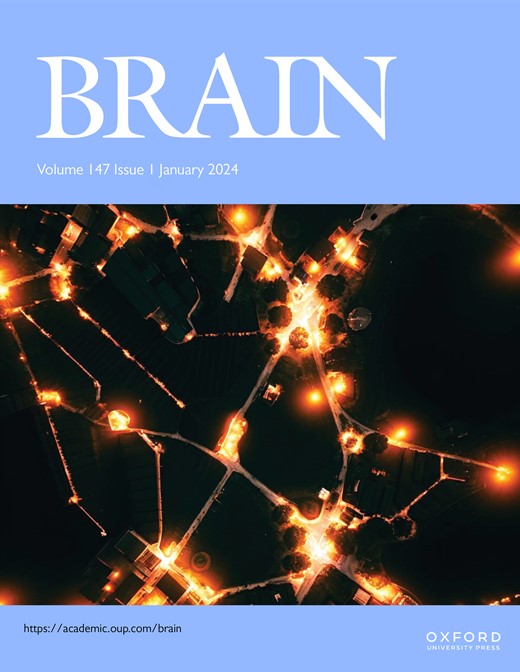蛋白质糖基化和突触传递:脑糖原使它们分离
IF 11.7
1区 医学
Q1 CLINICAL NEUROLOGY
引用次数: 0
摘要
长期以来,脑糖原一直被认为是在紧急情况或活动加剧时提供能量支持的唯一来源。最近,脑糖原被发现含有大量的葡萄糖胺,葡萄糖胺用于维持蛋白质的糖基化。在这次更新中,我们强调通过己糖胺途径合成葡萄糖胺会减去谷氨酰胺,而谷氨酰胺是谷氨酸和GABA循环所必需的。脑糖原似乎起着额外的作用。通过提供葡萄糖胺并通过葡萄糖胺抑制己糖胺途径,糖原避免了谷氨酰胺的消耗。在神经糖原蓄积性疾病中,己糖胺通路与神经递质循环之间的短路可引起癫痫发作,这是这些疾病中最常见的急性表现。我们最后讨论了糖原储存病与先天性糖基化障碍的代谢和症状叠加,结论是改善某些所讨论病理的临床症状的治疗也可能对其他病理有益。本文章由计算机程序翻译,如有差异,请以英文原文为准。
Protein glycosylation and synaptic transmission: brain glycogen keeps them separated
Brain glycogen has for long been regarded uniquely as a source of energetic support in situations of emergency or heightened activity. Recently, brain glycogen was found to contain a significant amount of glucosamine, which is used to sustain protein glycosylation. In this update, we highlight that glucosamine synthesis through the hexosamine pathway would subtract glutamine, which is instead indispensable for glutamate and GABA recycling. Brain glycogen seems then to serve an additional role. By providing glucosamine and, through it, inhibiting the hexosamine pathway, glycogen avoids glutamine depletion. In neurological glycogen storage diseases, the short-circuit between the hexosamine pathway and neurotransmitters recycling can cause epileptic seizures, which are the most common acute manifestation in these pathologies. We finally discuss the metabolic and symptomatic superposition of glycogen storage diseases with congenital disorders of glycosylation, concluding that treatments ameliorating the clinical symptoms in some of the discussed pathologies could also be beneficial in the others.
求助全文
通过发布文献求助,成功后即可免费获取论文全文。
去求助
来源期刊

Brain
医学-临床神经学
CiteScore
20.30
自引率
4.10%
发文量
458
审稿时长
3-6 weeks
期刊介绍:
Brain, a journal focused on clinical neurology and translational neuroscience, has been publishing landmark papers since 1878. The journal aims to expand its scope by including studies that shed light on disease mechanisms and conducting innovative clinical trials for brain disorders. With a wide range of topics covered, the Editorial Board represents the international readership and diverse coverage of the journal. Accepted articles are promptly posted online, typically within a few weeks of acceptance. As of 2022, Brain holds an impressive impact factor of 14.5, according to the Journal Citation Reports.
 求助内容:
求助内容: 应助结果提醒方式:
应助结果提醒方式:


